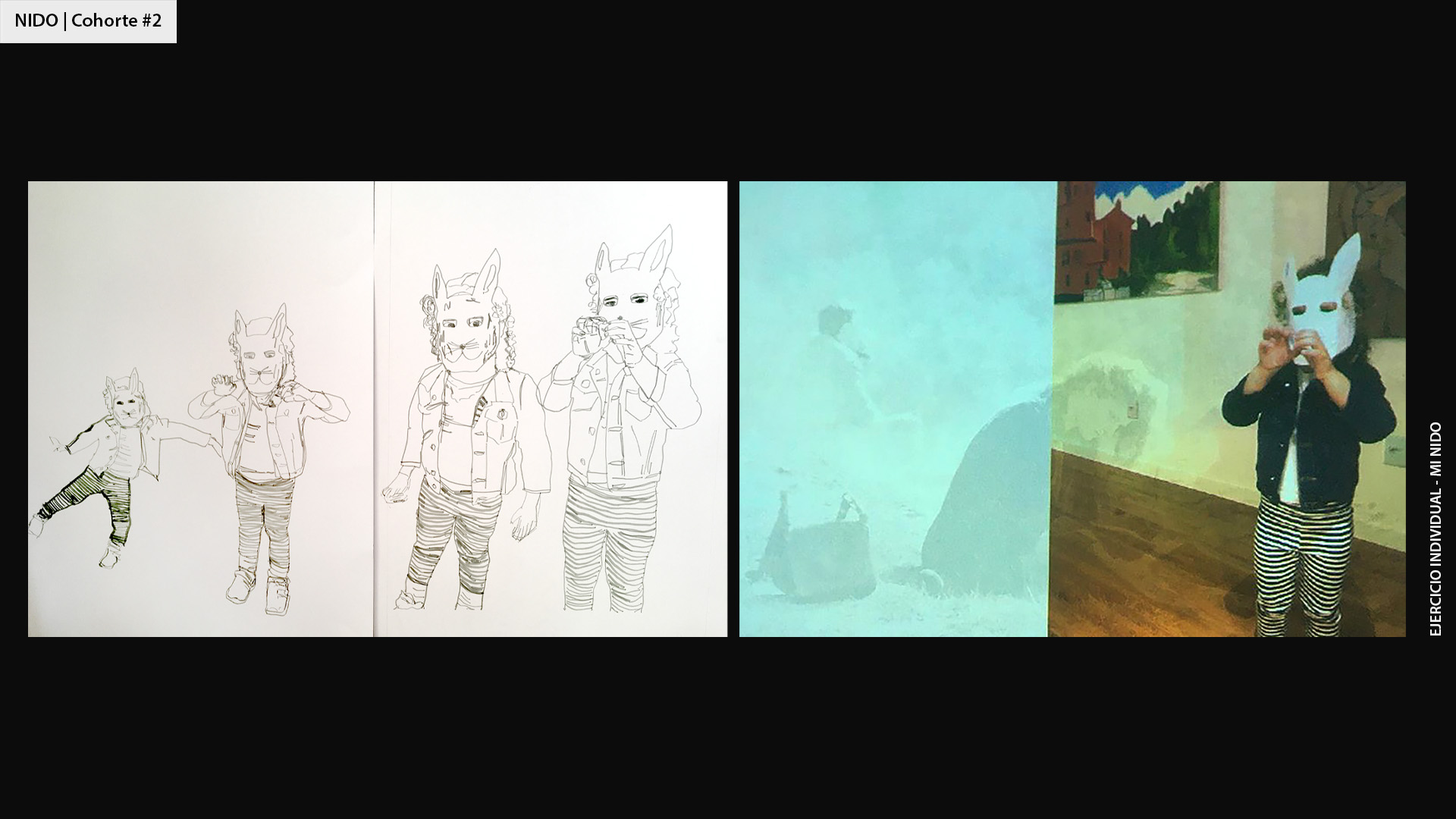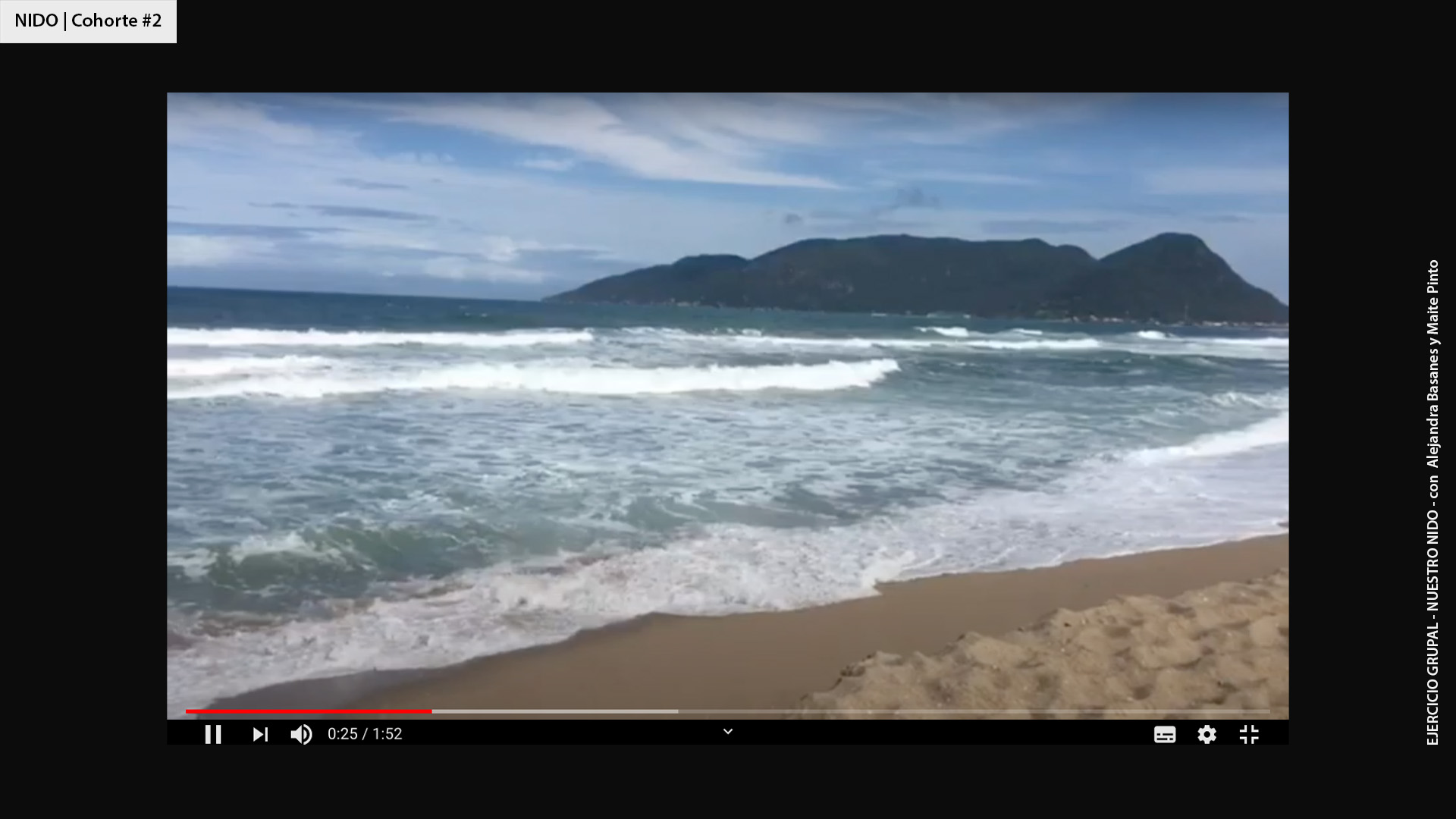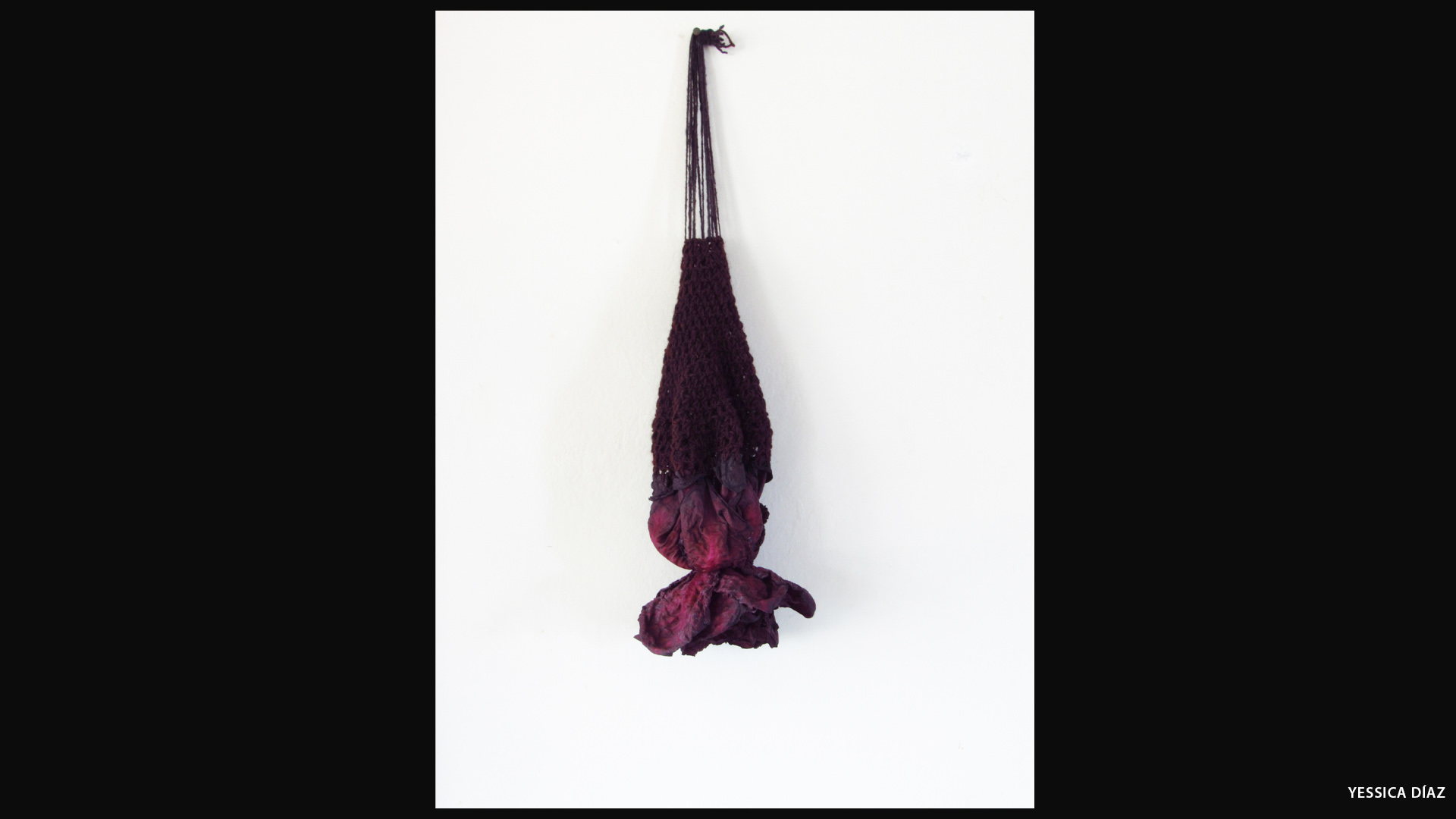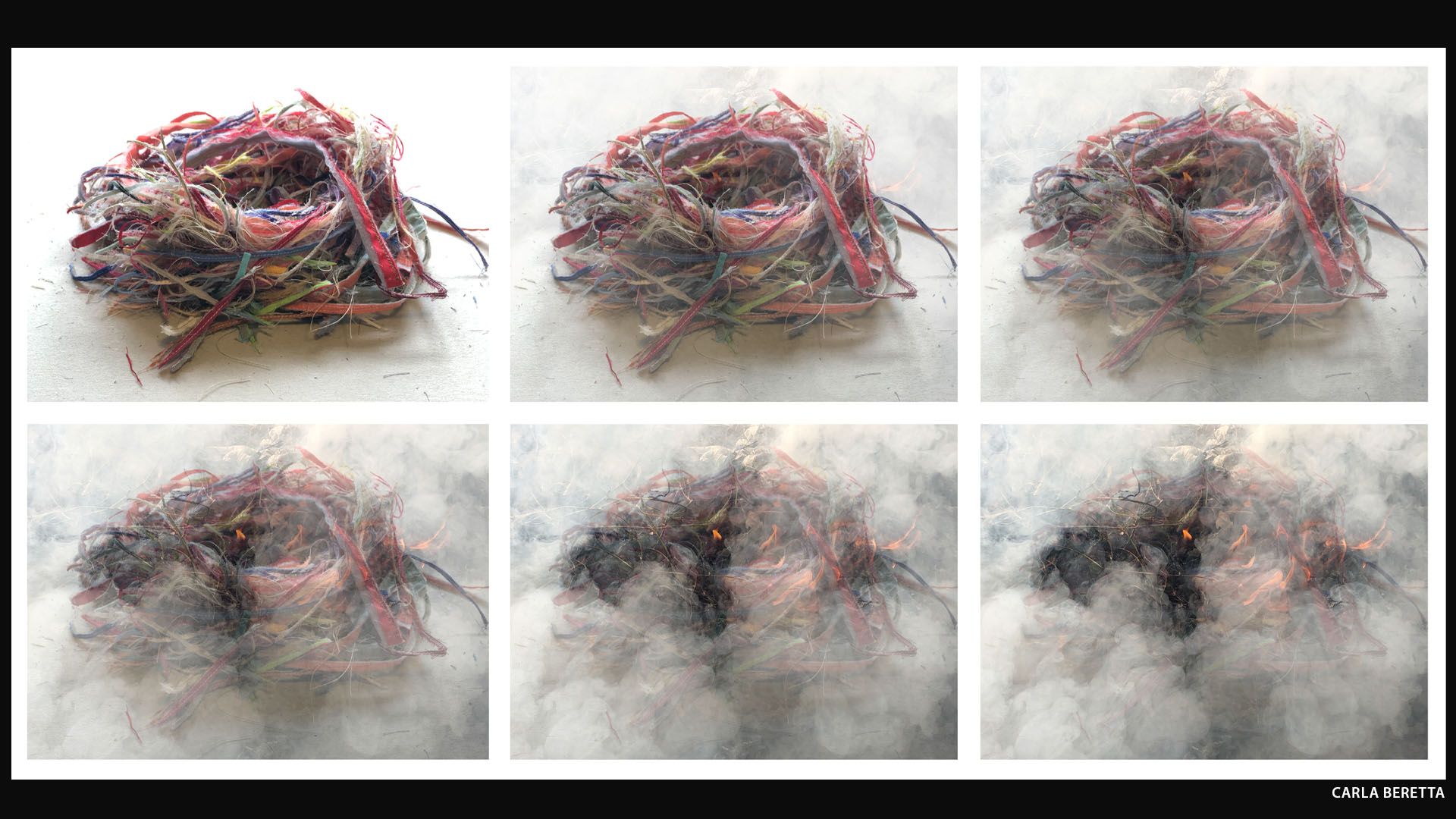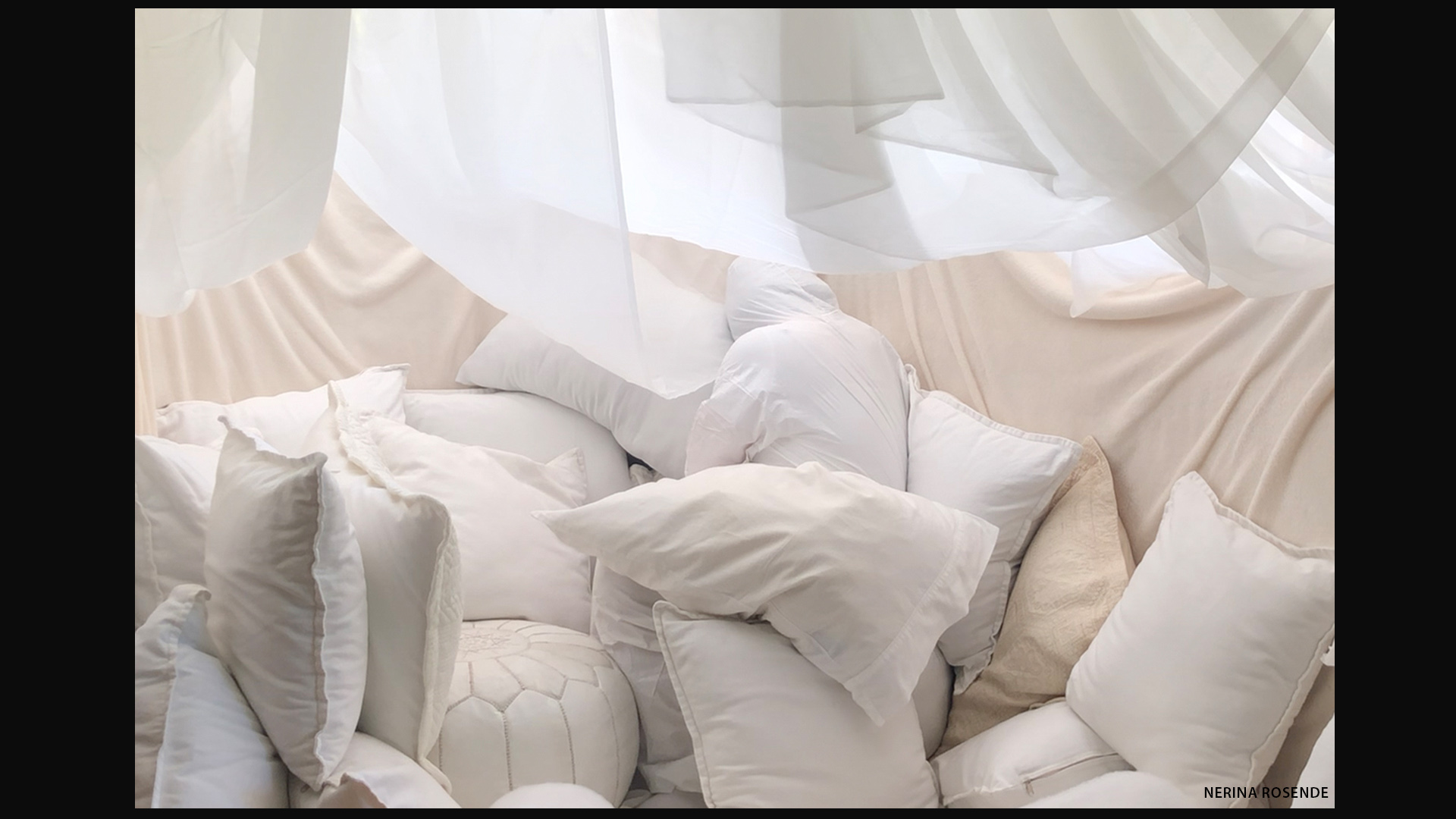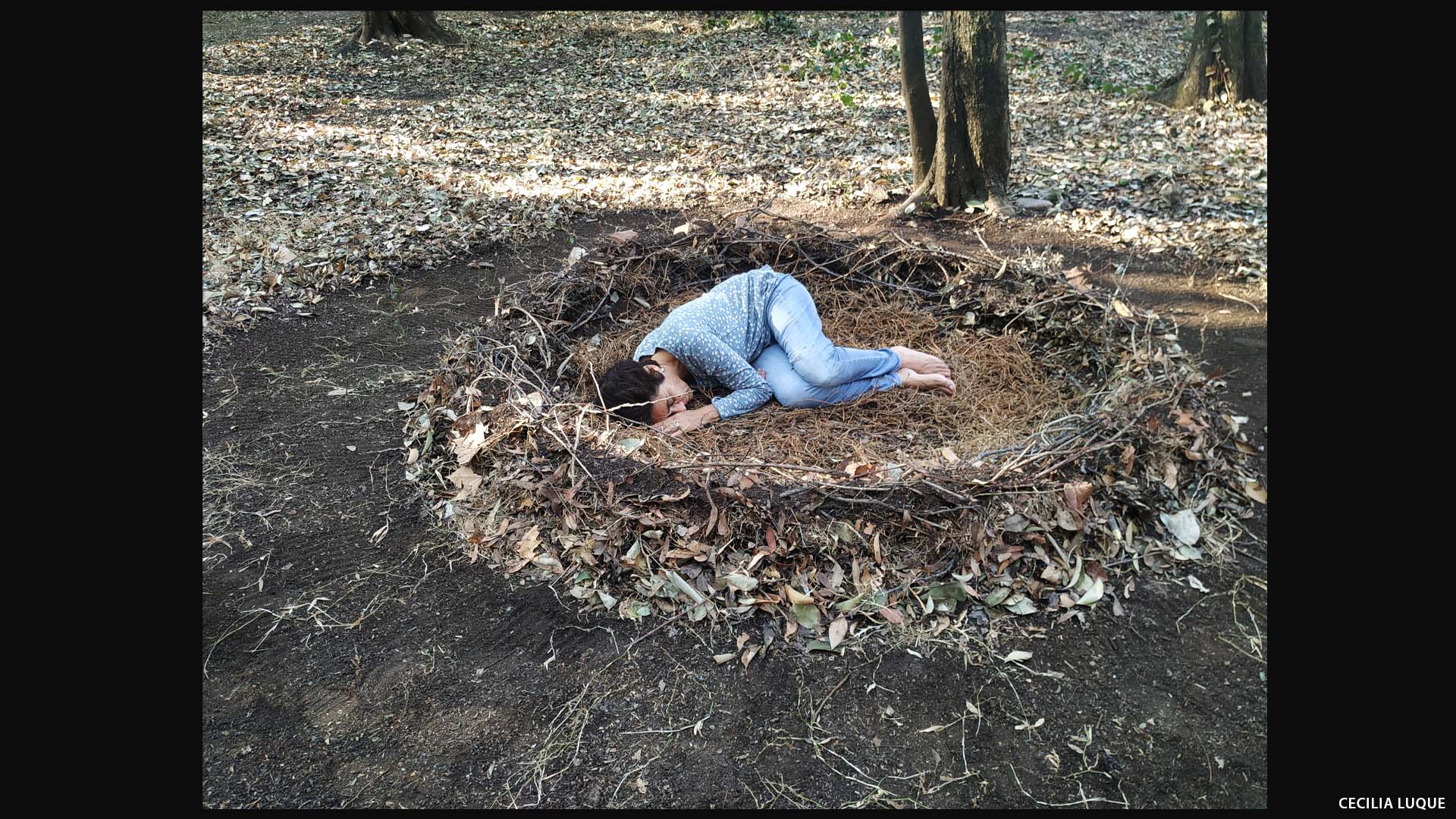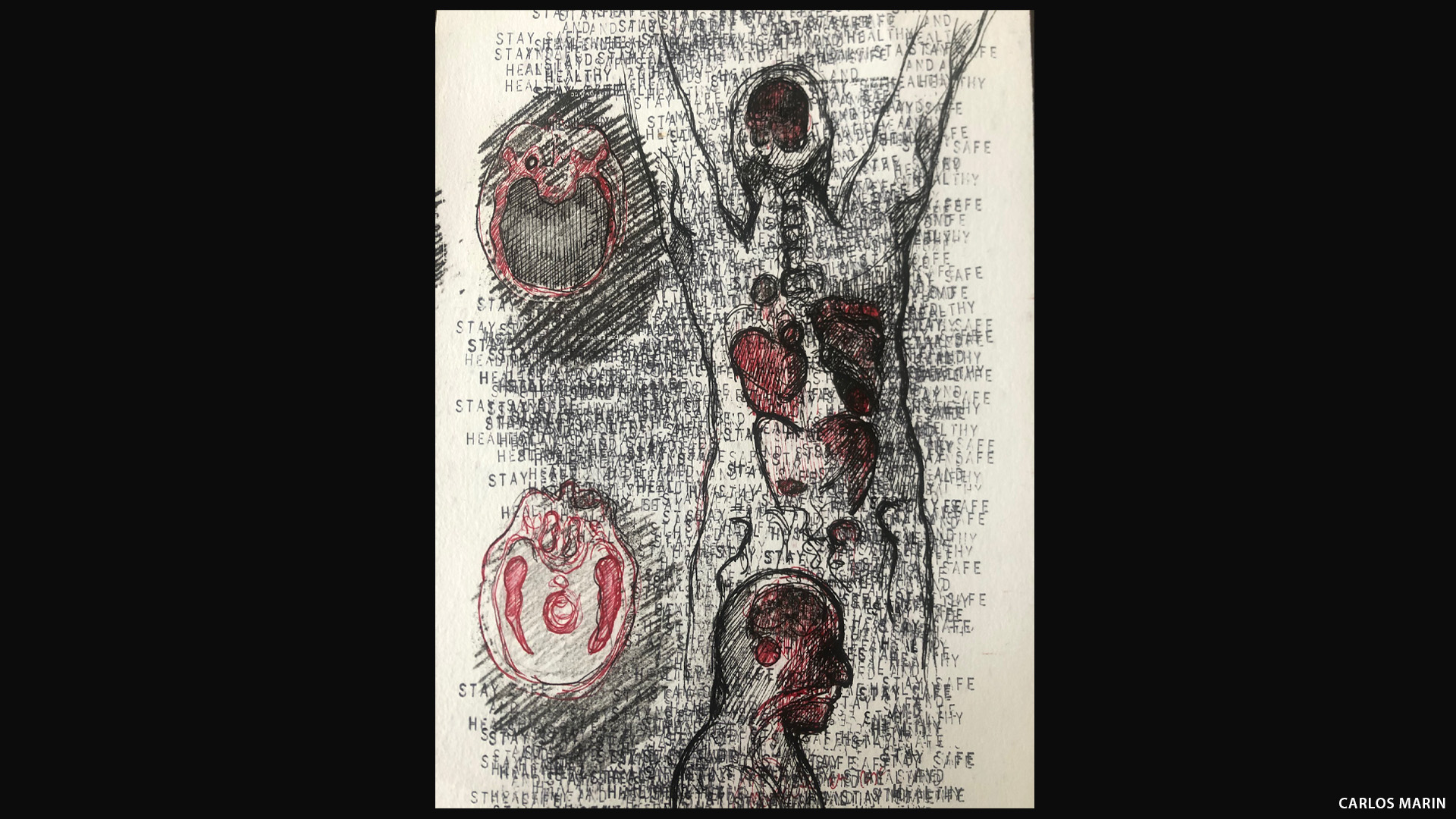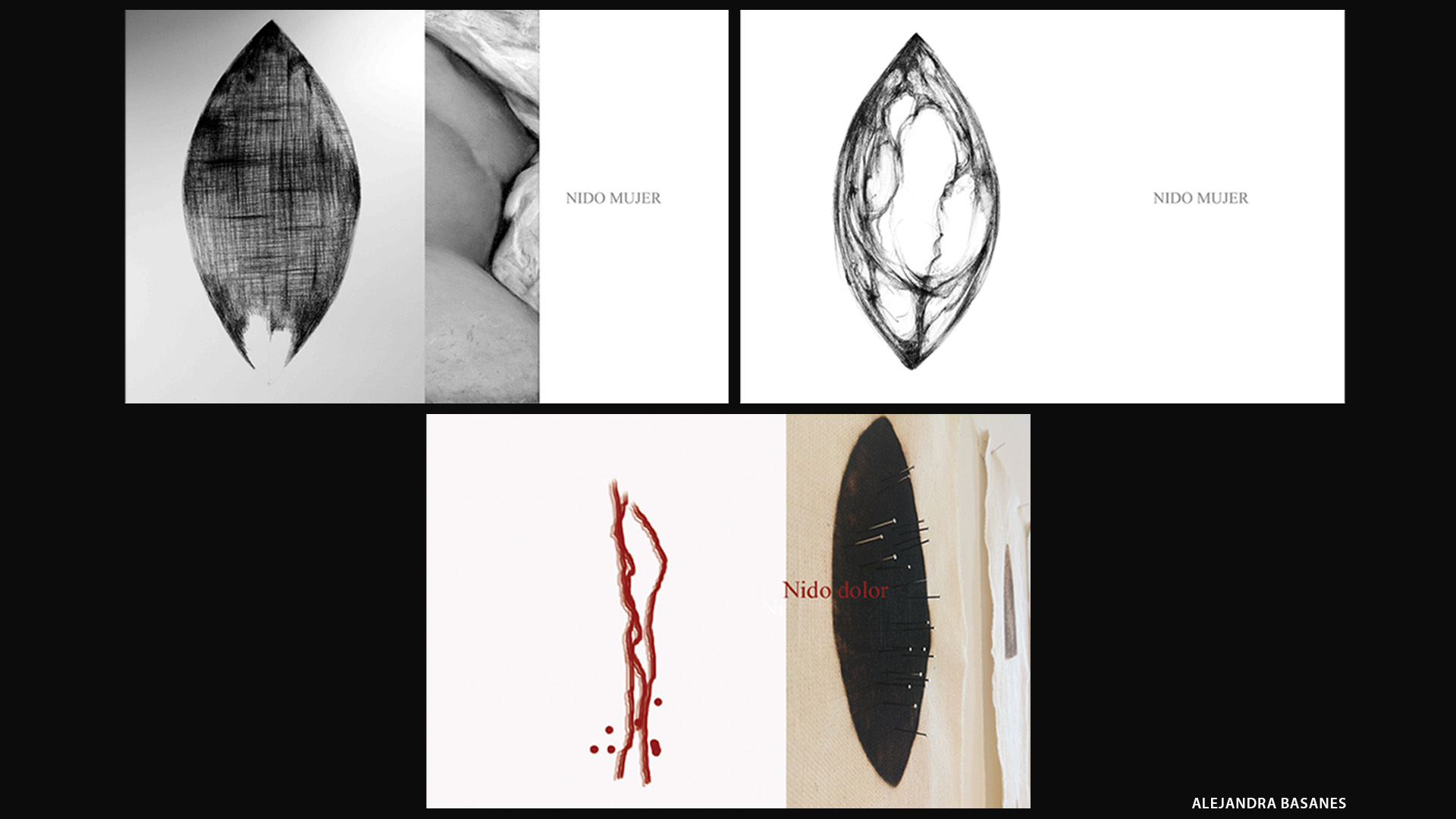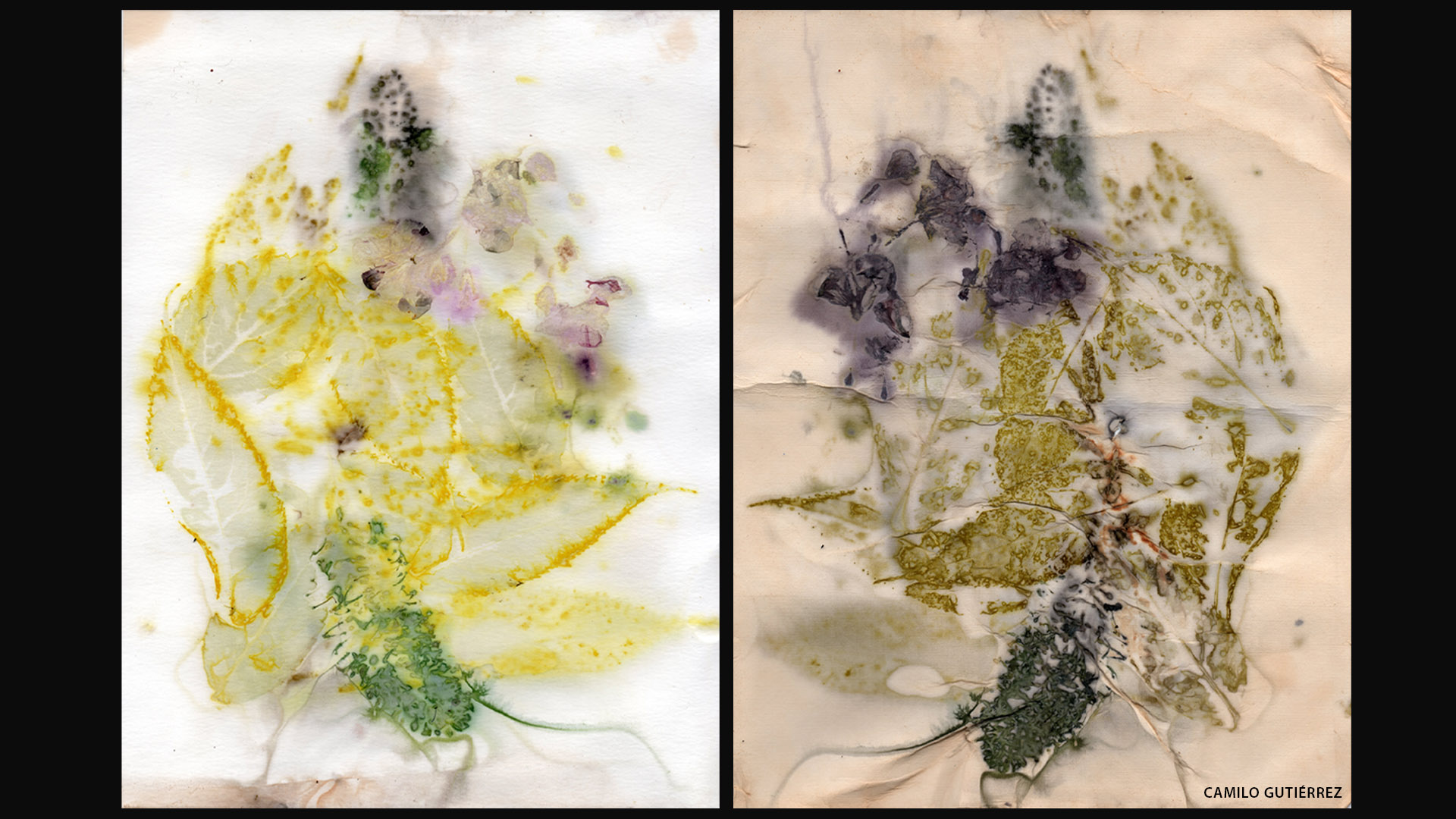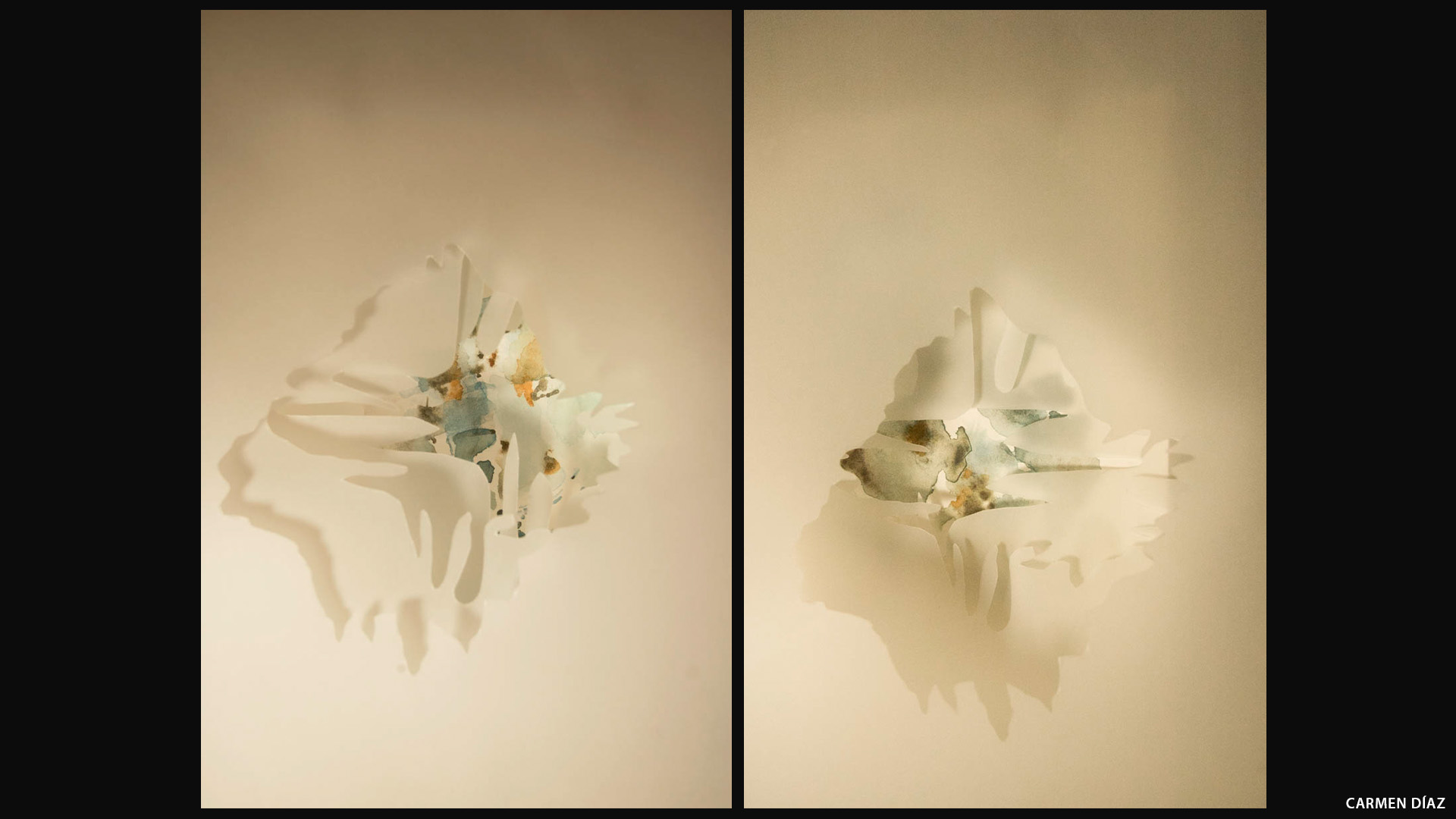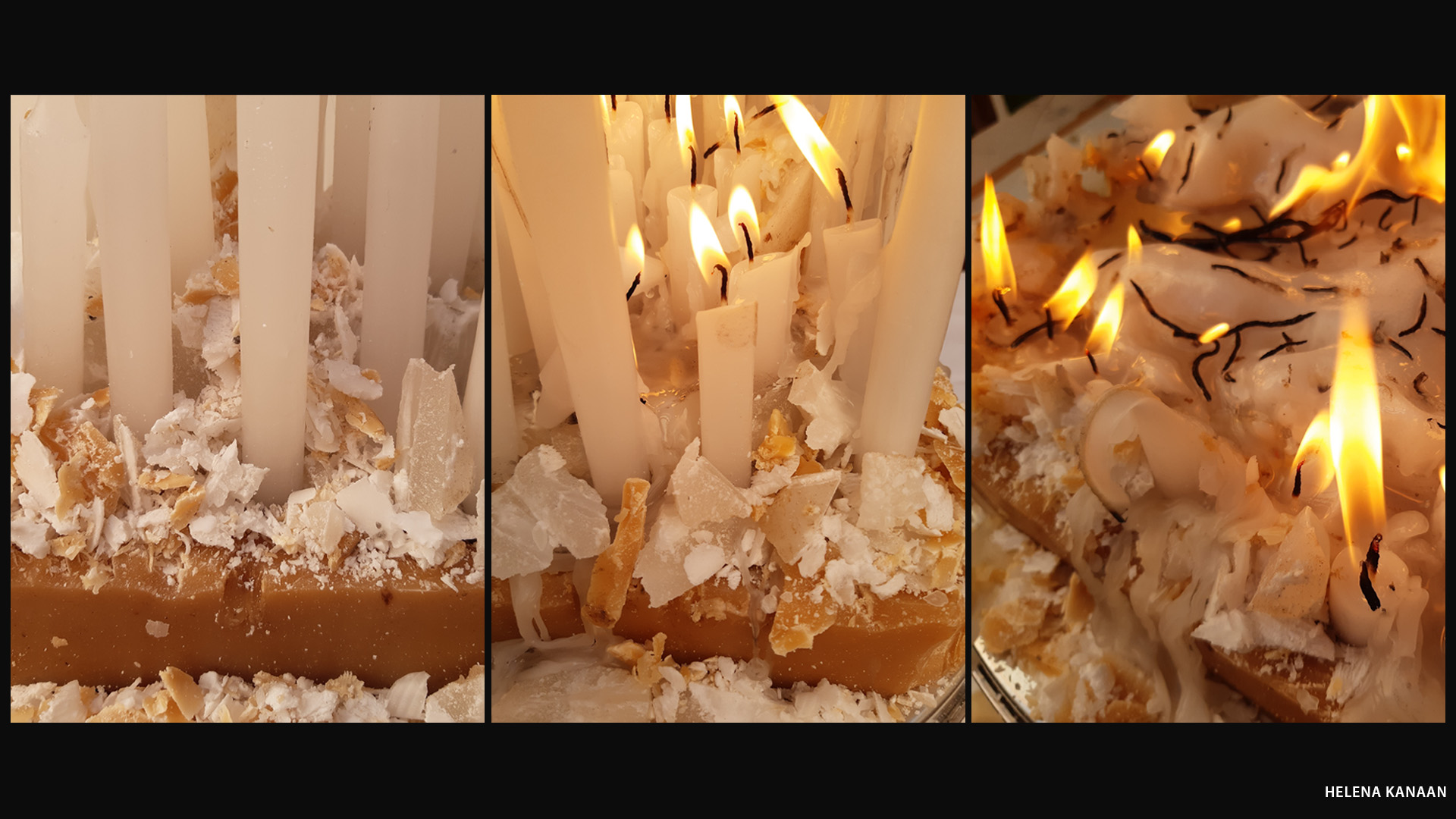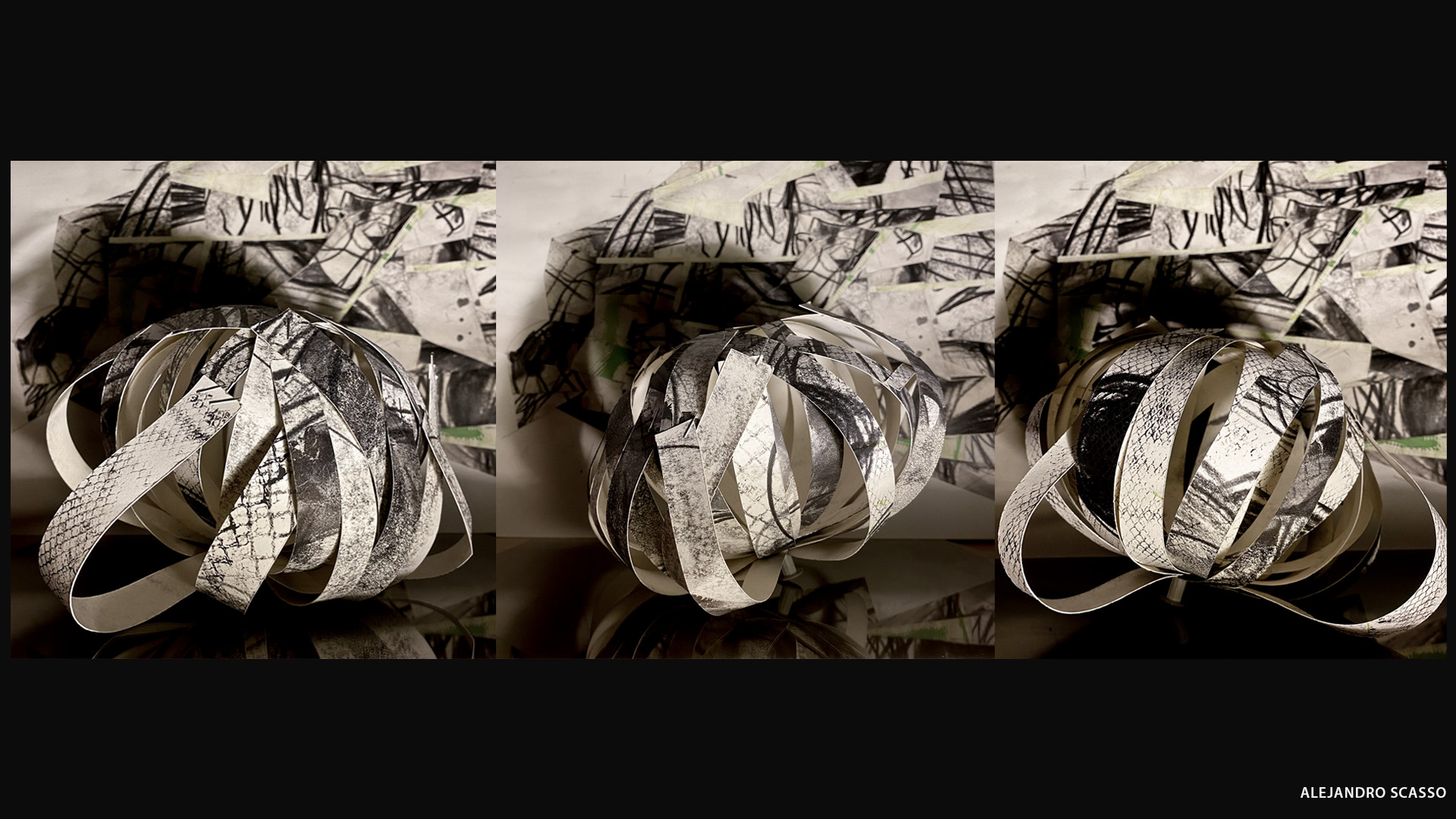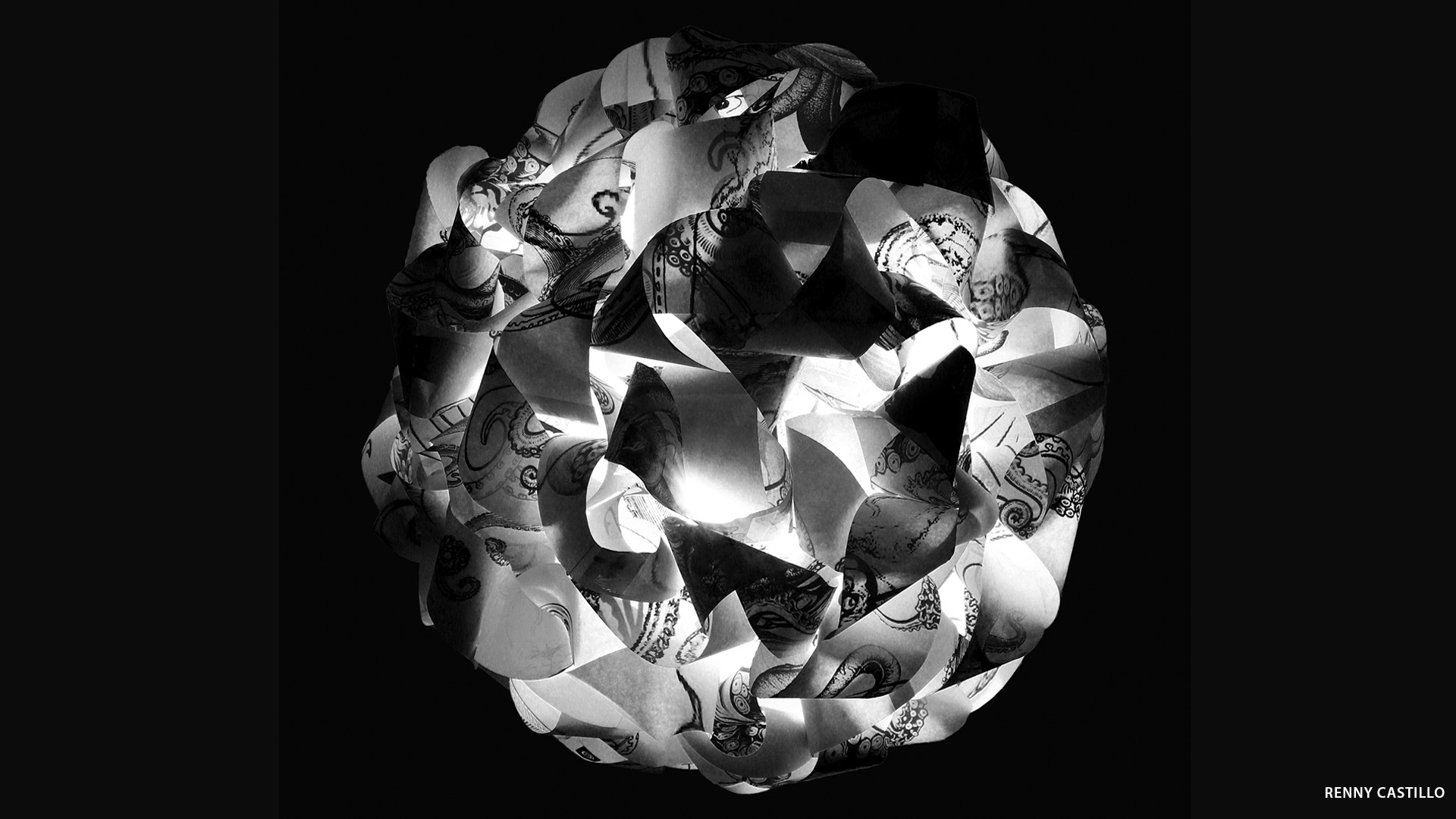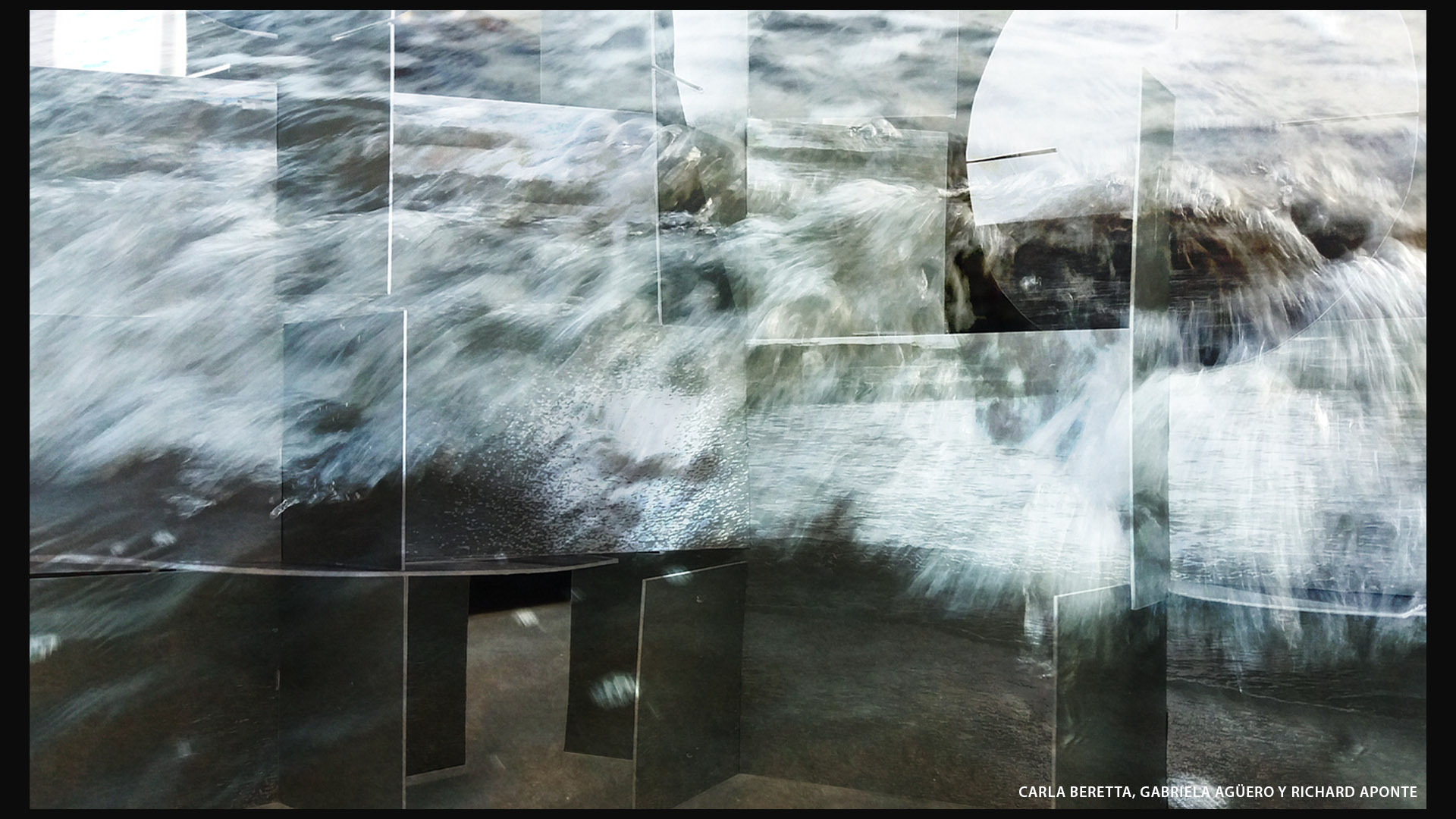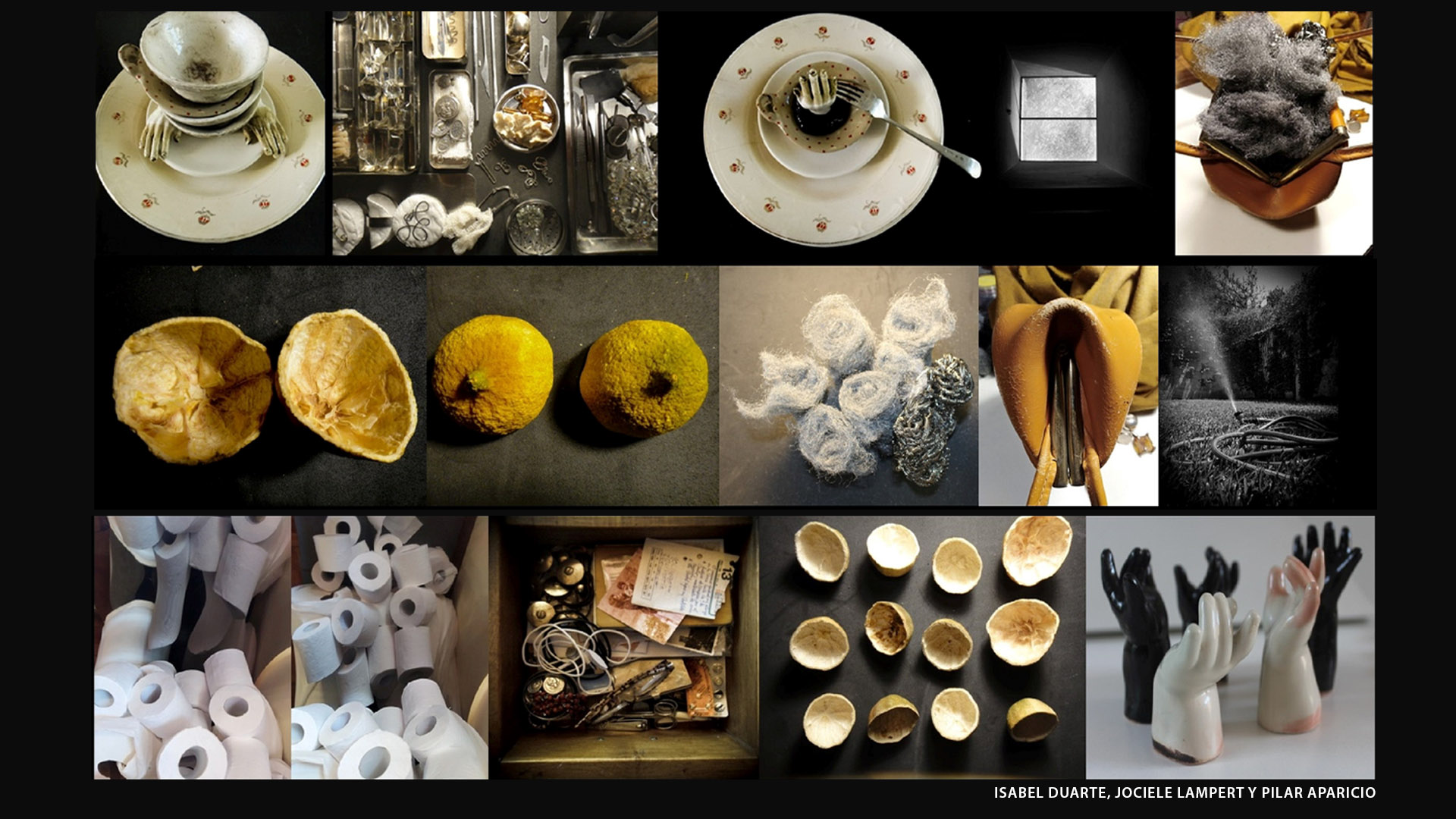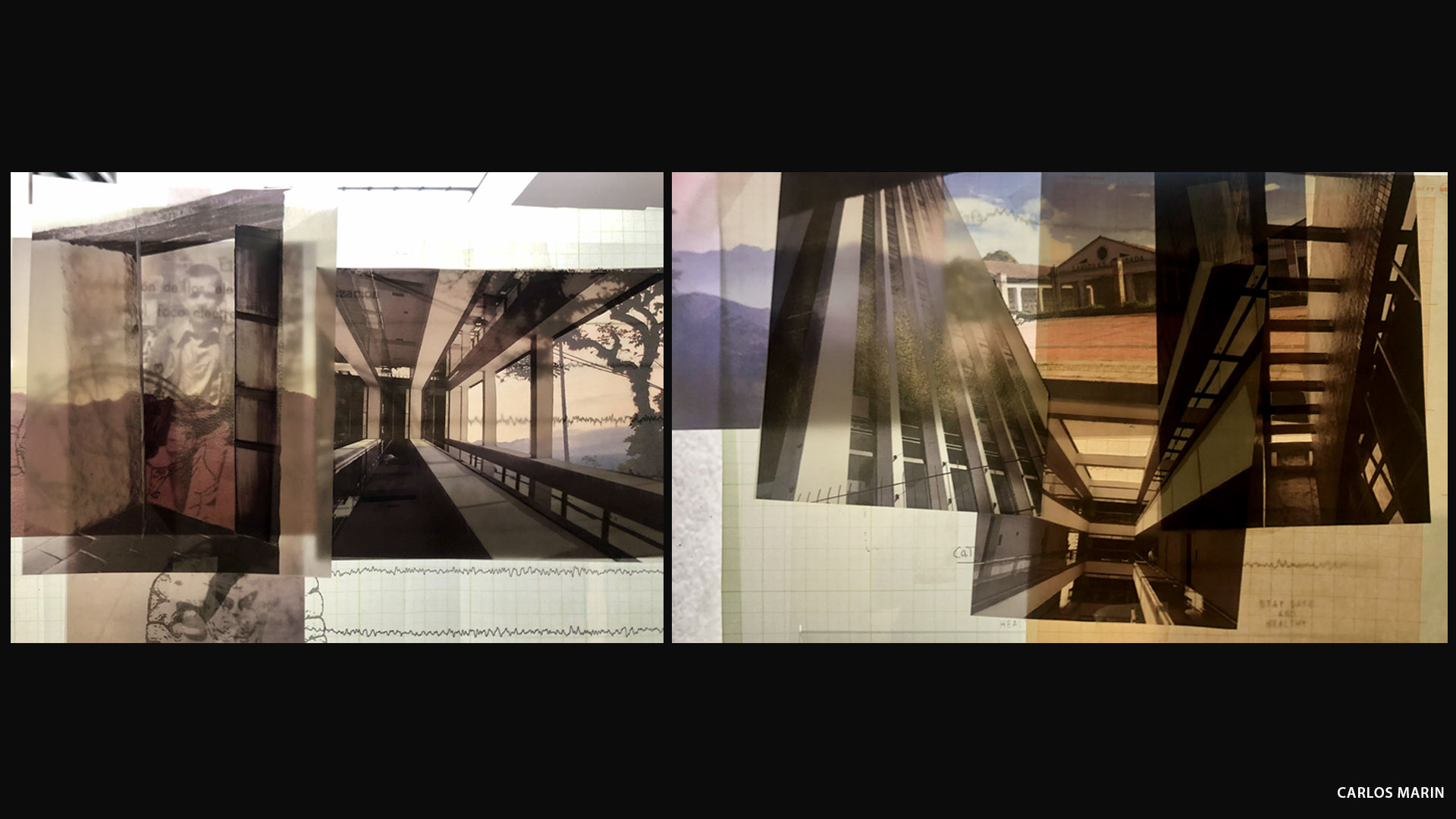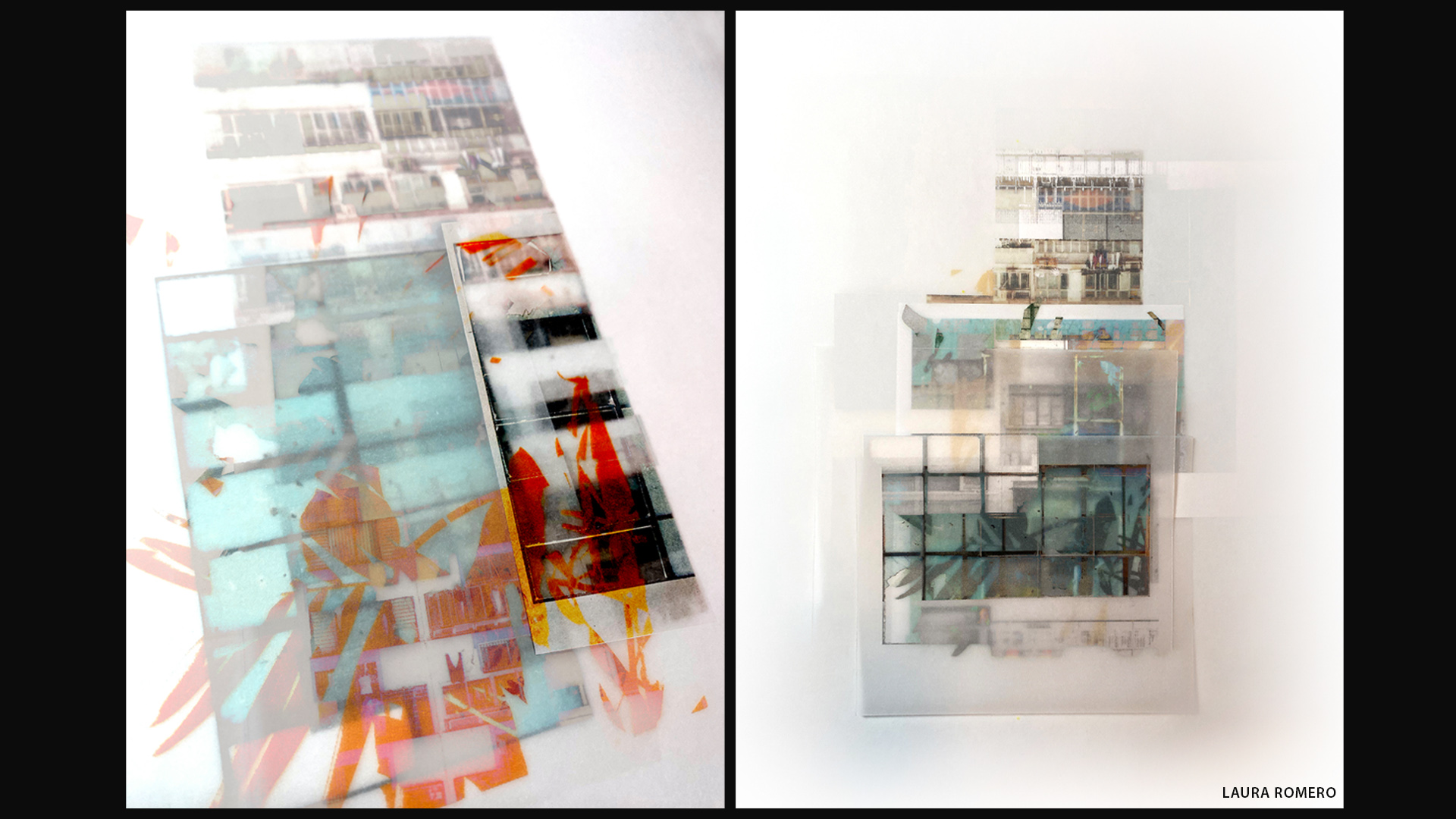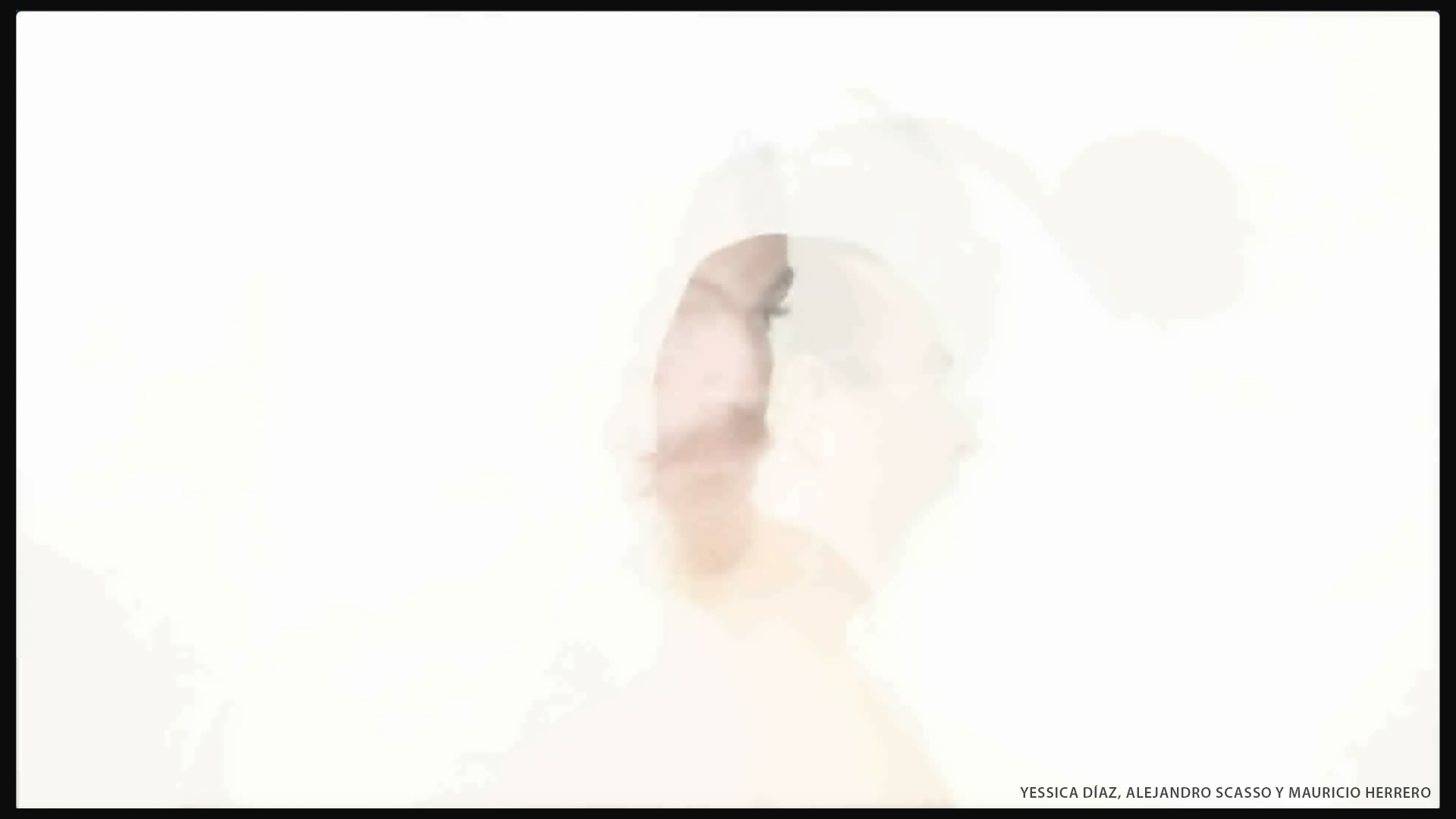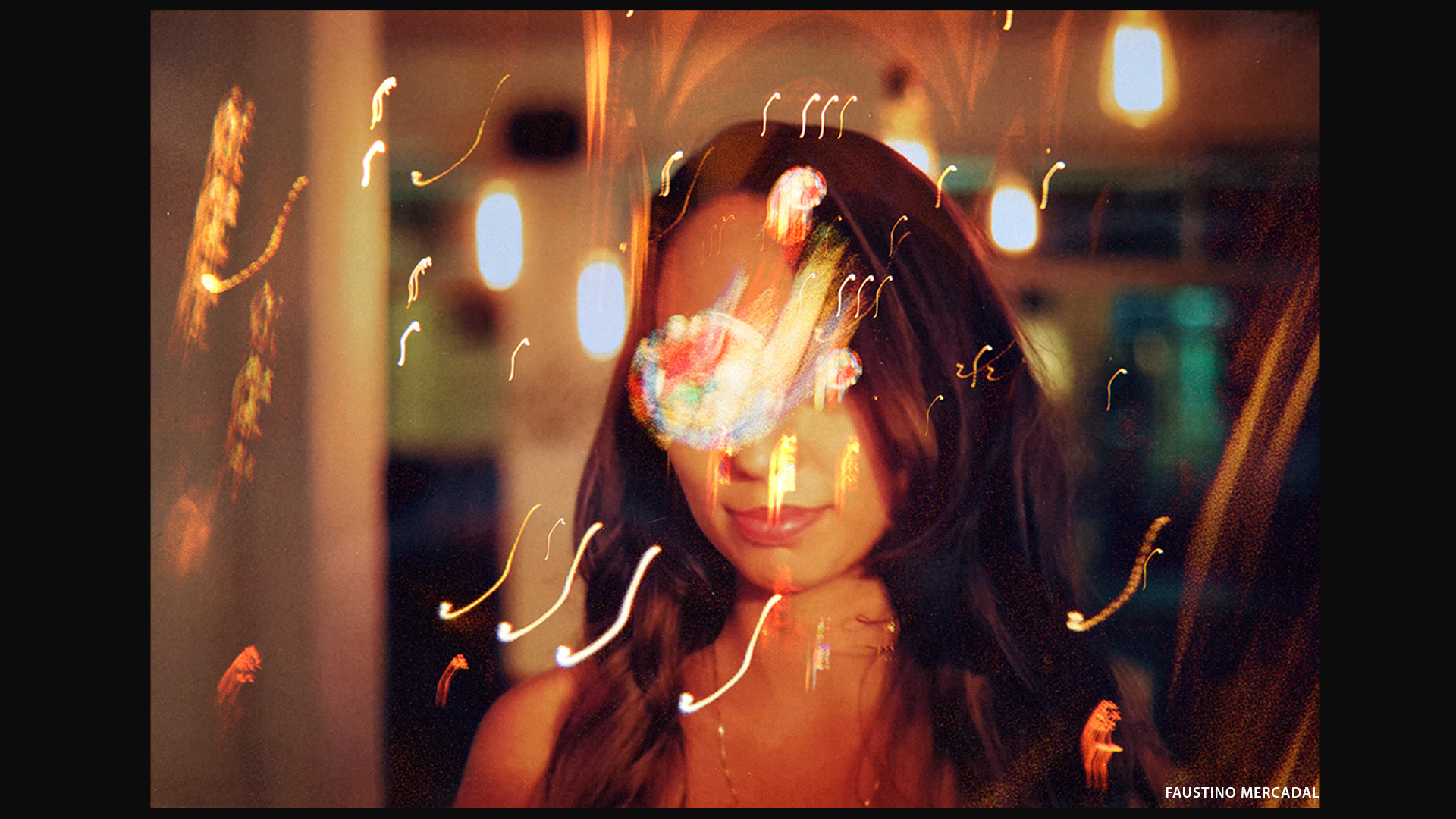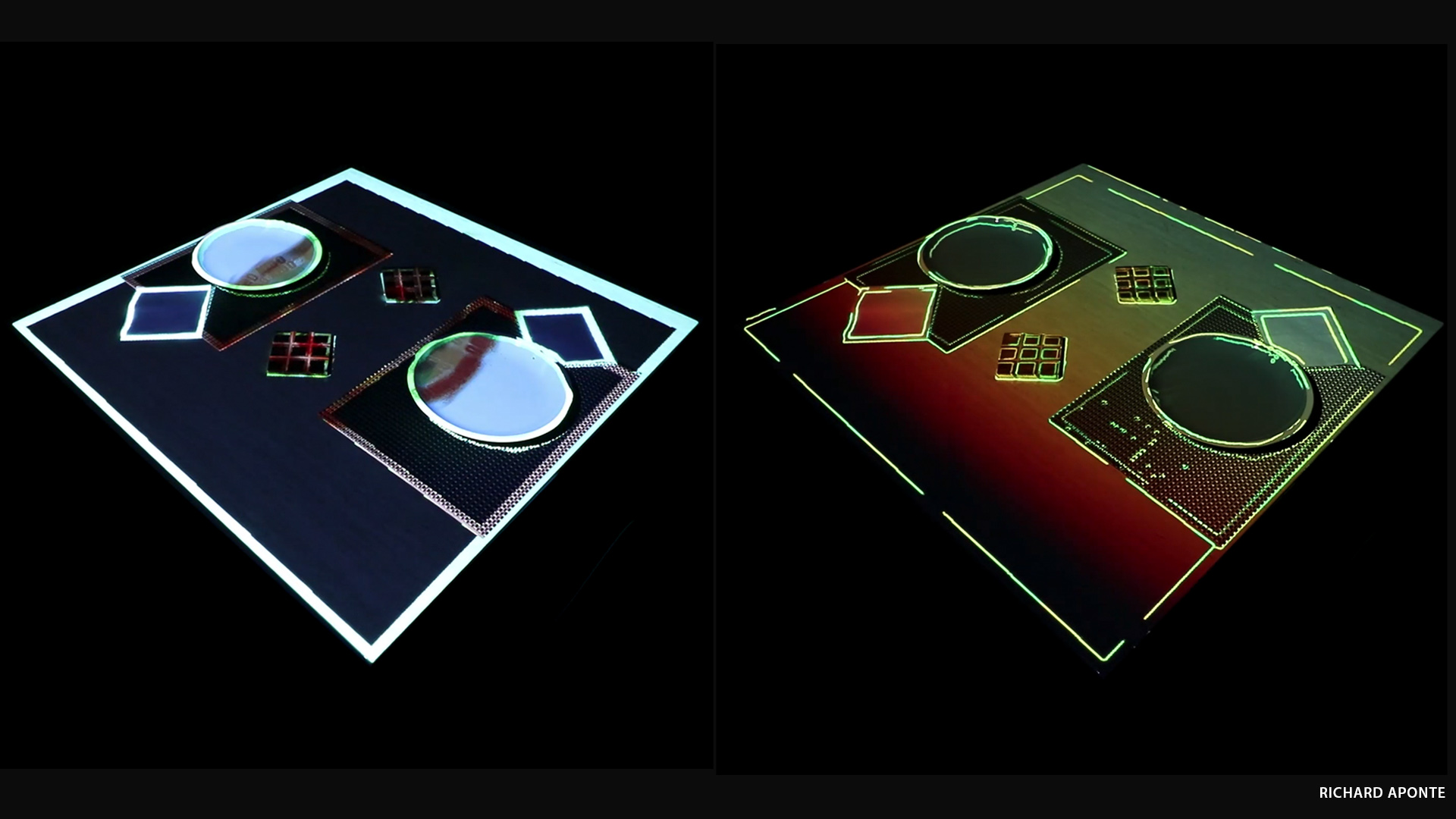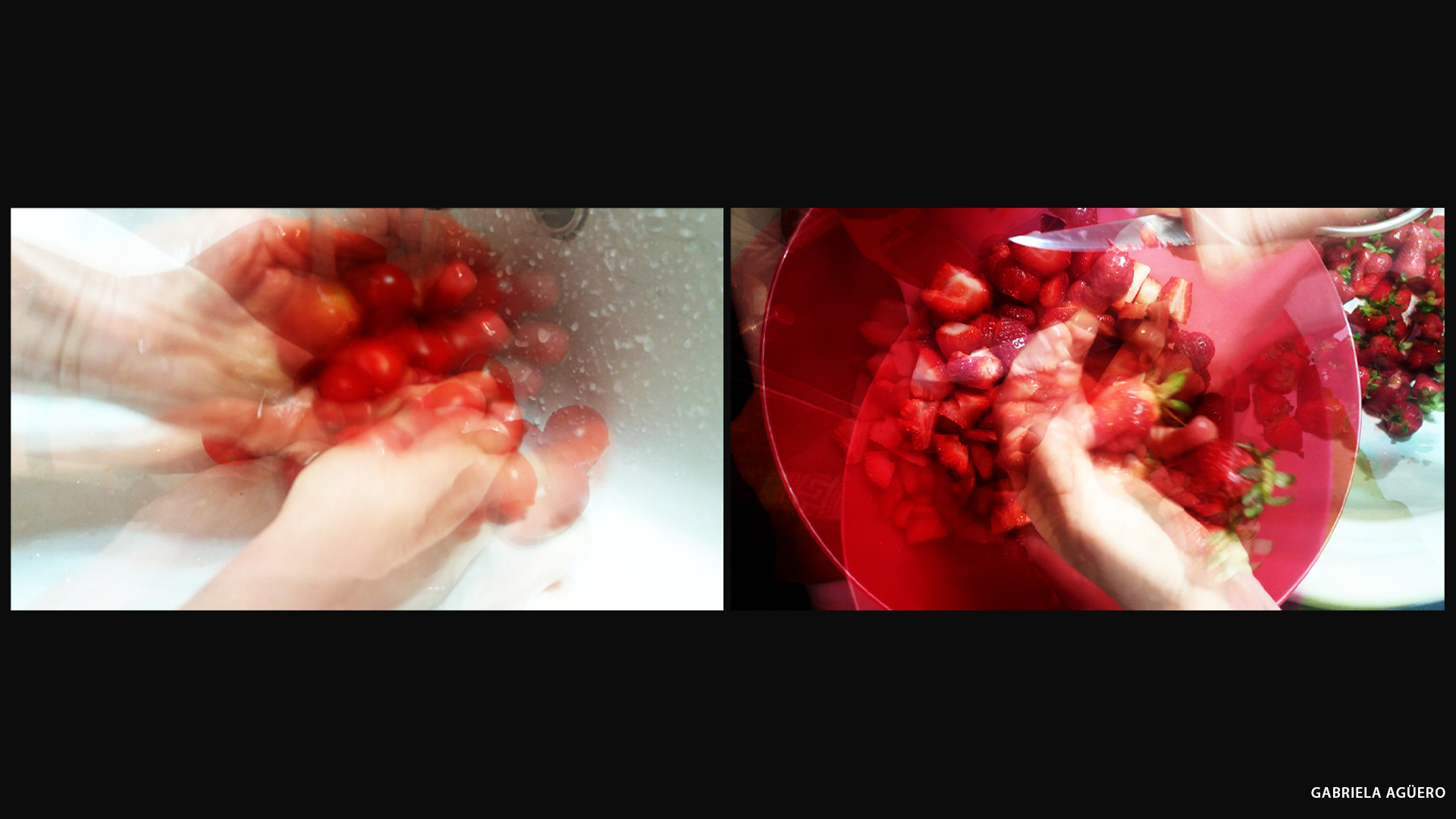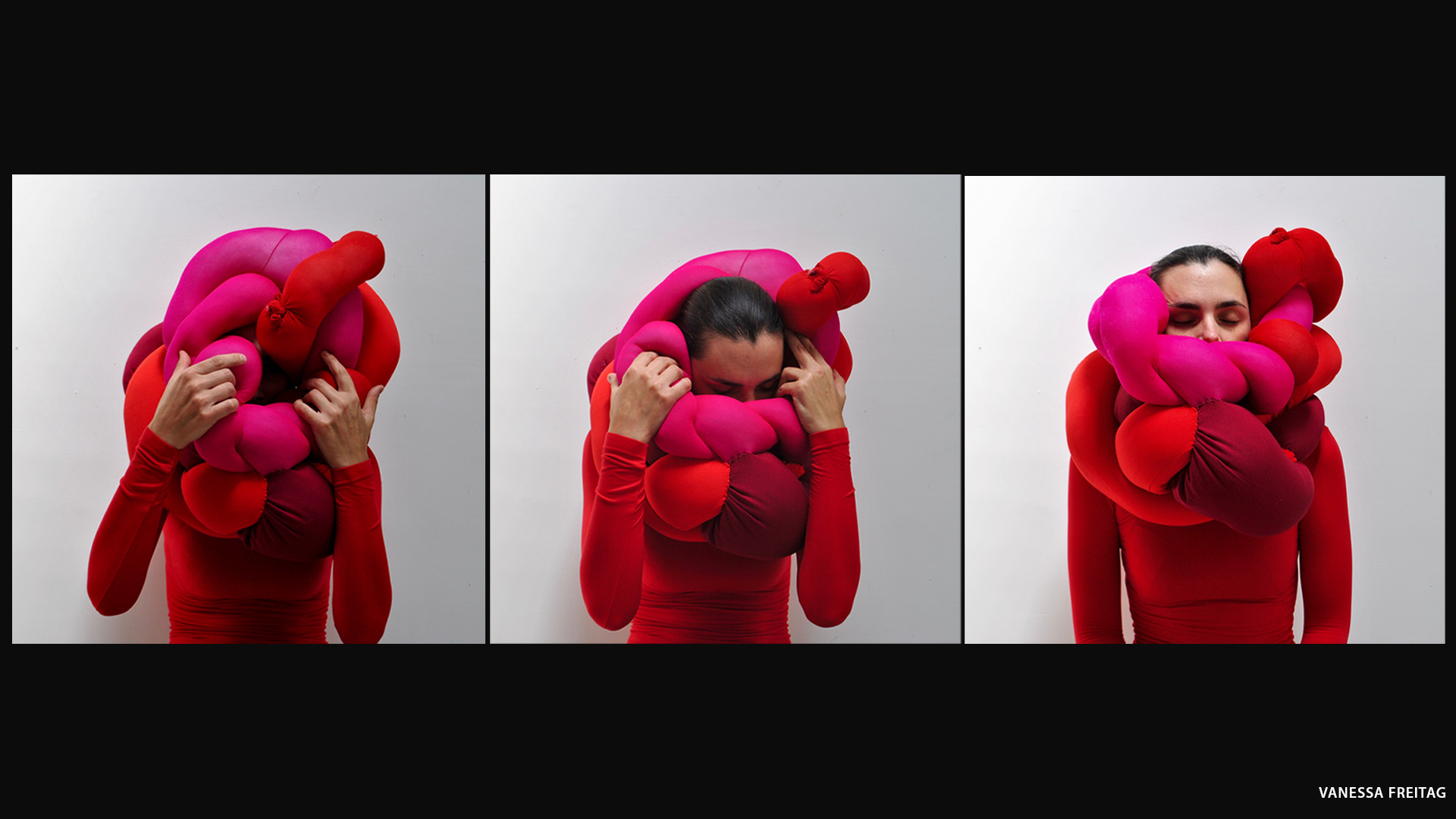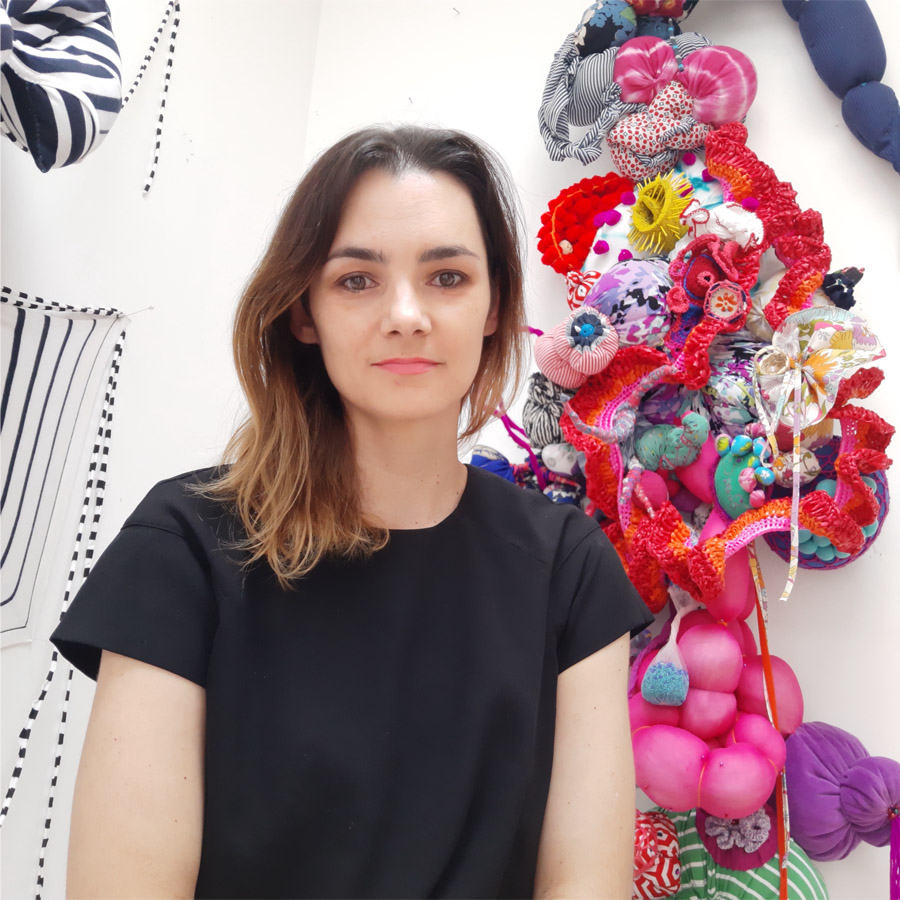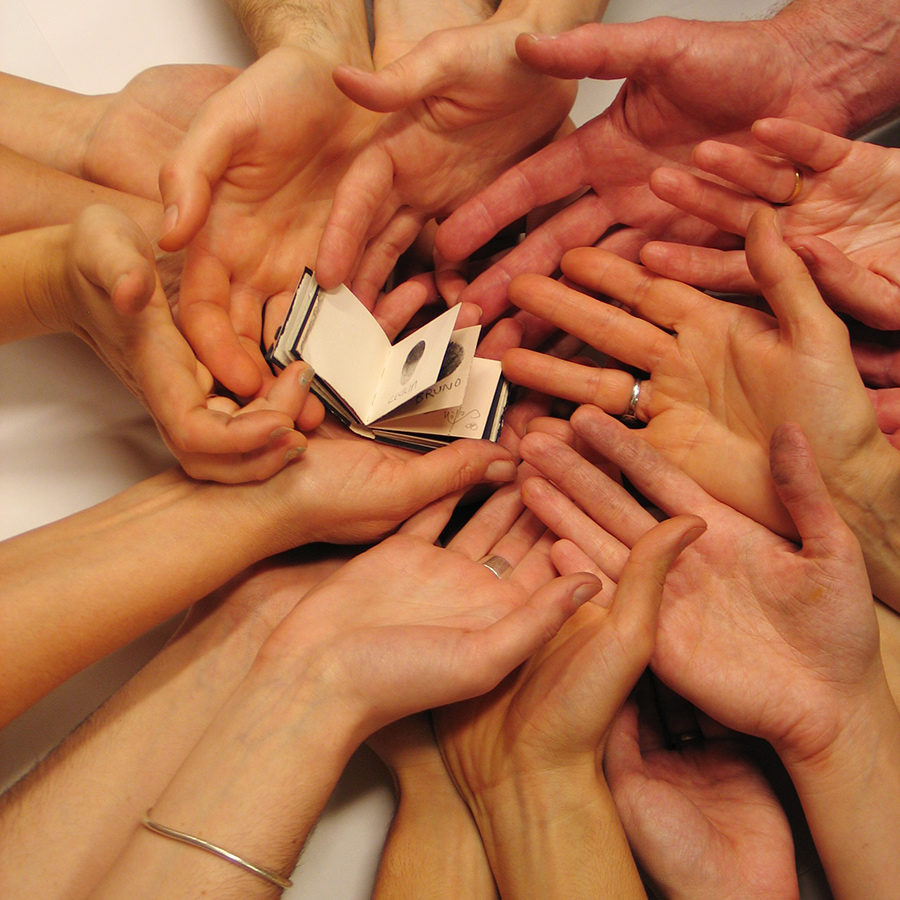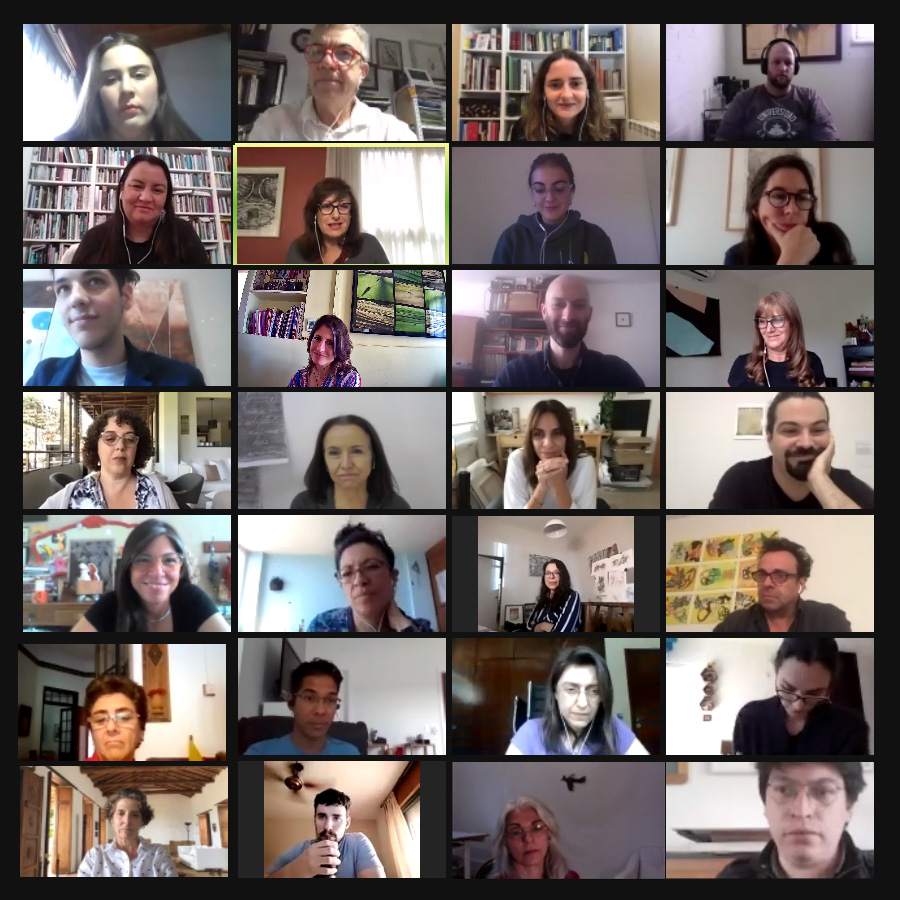Artists
Brazil
Jociele Lampert
Together Apart: #Nest
14.10.20 04.11.20
Lives and works in Florianópolis since 2005. Her work encompasses hybrid processes of painting, drawing and printing between pictorial and graphic language. She investigates the construction of cinematographic images with dialogue for painting, from the field of landscape to everyday things, showing ways of seeing as creative games.
As a professor at the University, she works with the connection between artistic practice and pedagogical practice as an artist teacher and researcher. She has been building theories and practices in collaborative work, on art as experience, taking inspiration from the writings of John Dewey.
JOCIELE ABOUT TOGETHER APART: NEST
During the Nido de ´ace Program, I intensified my study practice based on looking at the environment as a poetic refuge, with creative and inventive power, facing the time of the pandemic. Discovering the house as a nest and, a nest as an object of research in the field of art, it was possible to reconstruct the artistic experience in an affirmative, conscious, critical and imaginative way.
By participating in collective practices, we use the language of art as a rhetoric and a methodological process, collaborating in changes in the practice of doing / acting / feeling, such as visual essays and videos developed with other artists.
BIO
Jociele Lampert
1977 | Santa Maria, Rio Grande do Sul, Brazil
Lives and works in Florianópolis, Santa Catarina
Founder and Coordinator of Apotheke Painting Studio
STUDIES
2013 | Visiting Scholar Fulbright at Columbia University, Teachers College, USA
2009 | PhD in Visual Arts, School of Communications and Arts of the University of São Paulo, USP, Brazil
2005 | Master of Education, Federal University of Santa María, Brazil
2002 | Graduate and Bachelor’s Studies in Design and Plastic, Federal University of Santa María, Brazil
EXHIBITIONS
2018 | Solaris, Claudio Carriconde Exhibition Hall at UFSM, RS, Centro de Artes e Letras, Santa Maria, RS
2018 | Deambulações sobre a Pintura, Museo de Arte de
Blumenau, Santa Catarina
2017 | Solaris, Municipal Gallery of Art Pedro Paulo Vecchietti, Florianópolis
2016 | Deambulações sobre a Pintura, Museum of Art of Santa Catarina, Florianópolis
2015 | Vorkurs, Pedro Paulo Vecchietti Gallery, Florianópolis
2013 | Open Studio at Vermont Studio Center, United States
2006 | Visto logo existo, Galeria Montet, Brazil
2006 | Vale Vêneto: um olhar affetivo e memoria, SESC Centro Curitiba
2004 | Devir, SESC Centro Curitiba
2003 | O andarilhar no caminho, Gaiger Cult Gallery. Santa Maria
2002 | Impressões, First Work Gallery, Santa Maria
RESIDENCIES
Vermont Studio Center 2013
Related Activities
Exhibitions, Together Apart
#2 | NEST: results
Artists in dialogue
09.12.20
During 2020, we carried out the first two sessions of Together Apart. The first session took as a conceptual and practical framework the REFUGE and the second, the NEST. Through those starting points, both of which refer to caring atmospheres and structures for coexistence, we were able to think and create in a wide variety of directions and layers. We reflected on our pandemic context, a situation for which we had to find ourselves in the virtual non-space, but also a situation thanks to which people from many different countries were able to work simultaneously. Assuming this complex situation, more than 20 participants per session created new pieces –some in exercise format–, took up projects that they had already worked on in the past or collectively set out to create new projects that will continue to develop beyond the scope of our meetings. This exhibition, virtual as well, reflects what the artists produced during this program.
CURATORIAL ESSAY
by Daniela Ruíz Moreno [Curator-in-residency]
Taking these refuge and nest issues also in their complexity, we asked ourselves questions that made each of the participants involve their personal experiences, memory, memories and experiences from each of their territories. We addressed questions that sought to keep us in constant movement; at times we went through very optimistic or pessimistic visions about the possibility or necessity of having a shelter or a nest, and at other times, we were able to articulate more complex visions, enduring in intermediate and liminal states. For both, we took as a theoretical structure of support and dialogue the thought of Félix Guattari presented in The Three Ecologies (1989). His ethical-political approach that highlights the molecular domains of sensitivity, intelligence and desire, as well as his articulation of the three ecological registers (environment, social relations and human subjectivity), helped us to expand our creations and thoughts in relation to shelter and nest.
During the second session –nest– the gaze towards natural structures was also very present. We watched and learned about different types of nests made by birds or protective structures for other animals. We thought of the house and the workshop as nests. The diversity in age and origin of the artists allowed a great richness of reflections on different states in relation to the nest. We spoke of nests from the past, nests that we are building in the present, nests that are no longer nests since they oppress or suffocate and of new nests that we imagine or wish to build in the future. Projects were presented that included the use of organic materials, creations with what was available in the workshop, project of shared files, new photographic views on everyday life, new views on the past and even reflections on language as a generator of identity as well as limiting structure. We went through different sensations in relation to the nests, some presented it as an impossible state to reach, others as a space full of melancholy and others, instead, as structures of freedom where we could explore the becoming of existence. Other works presented the feelings of paranoia that can arise when human nests or states of refuge are threatened and the feelings of discomfort when it feels like losing the intimate conditions of a nest.
Together Apart has functioned as a program that opened up possibilities for meeting and collaborative creation. It has made possible the creation of new rhythms and synchronies for a limited time but whose reverberations and echoes continue to affect in unexpected directions.
Related artists
- Gabriela Agüero
- Pilar Aparicio Uribe
- Richard Aponte
- Alejandra Basañes
- Carla Beretta
- Marcela Casals
- Renny J. Castillo Umpierre
- Carmen Díaz
- Yessica Díaz
- Isa Duarte
- Vanessa Freitag
- Camilo Gutiérrez
- Helena Kanaan
- Denise Koziura
- Jociele Lampert
- Cecilia Luque
- Carlos Marin
- Faustino Mercadal
- Laura Romero
- Nerina Rosende
- Alejandro Scasso

